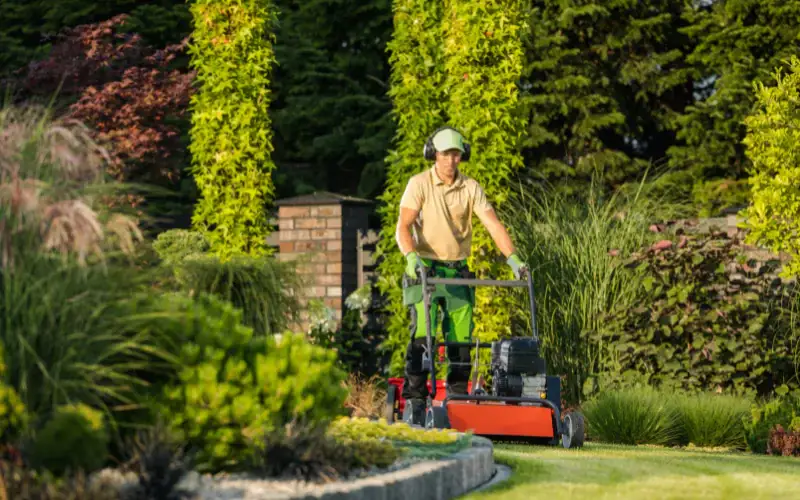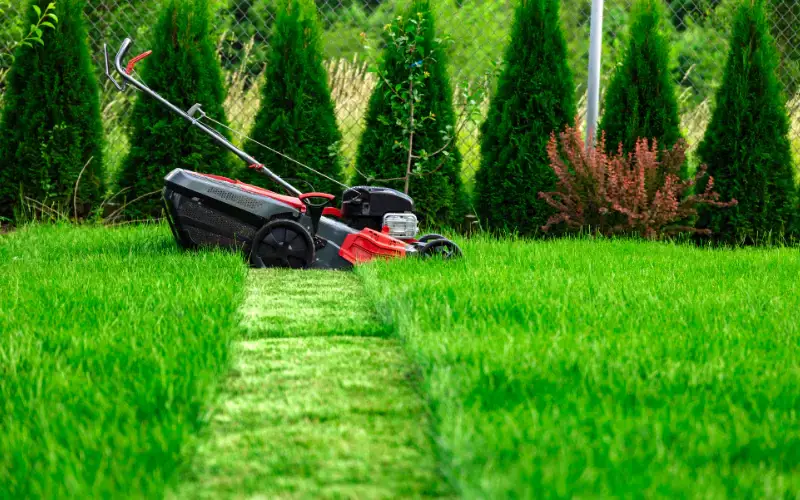Let’s be honest, taking care of your lawn isn’t always easy. It can feel like you’re going around in circles – plant, water, cut, repeat – but still not seeing the results you want. Brown spots pop up everywhere, weeds grow like crazy, and that dream of a thick, green lawn feels far away. But don’t give up! We’re here to tell you that getting a beautiful lawn doesn’t have to be a struggle. With the right know-how and expert lawn care tips, you can tackle common lawn problems and transform your yard into the best one on the block
In this guide, we’ll break down everything you need to know about lawn care in simple steps. No matter what you’re dealing with – pesky weeds, a thin lawn, or just wanting to make your yard even better – we’ve got your back. Get ready to say hello to a healthy, green lawn that will make your neighbors jealous.
Why Is It Important to Care for Your Lawn Properly?
Taking good care of your lawn is more than just making it look pretty. It’s about keeping it healthy and strong, so it can thrive through different seasons and weather conditions. When you properly care for your lawn, it becomes more resilient against pests, diseases, and weeds. A well-maintained lawn has a strong root system that allows it to better withstand environmental stresses. It also helps to improve air quality, reduce soil erosion, and even cool down the surrounding area. It also creates a welcoming space for you and your family to relax, play, and enjoy the outdoors.
6 Expert Lawn Care Tips for Homeowners
Maintaining a lush and healthy lawn requires a combination of proper techniques and consistent care. By following these expert tips, you can ensure your lawn stays green, vibrant, and resilient throughout the growing season. Here are six expert lawn care tips to keep your yard looking its best:
1. Mow High and Often
It may seem counterintuitive, but cutting your grass too short can actually harm it. Longer grass blades help shade the soil, preventing weeds from sprouting and reducing water evaporation. Aim to mow about ⅓ of the grass blade each time, and never remove more than half the height in a single mowing. A good rule of thumb is to keep your grass at around 3 inches tall during the growing season.

2. Water Deeply and Less Frequently
Shallow, frequent watering encourages shallow root growth. This watering method makes your lawn more susceptible to drought and heat stress. Instead, water deeply and less often, aiming for about 1 inch of water per week. Doing this will encourage deeper root growth and a more resilient lawn. Early morning is the best time to water, as it minimizes evaporation.
3. Fertilize Properly
Fertilizing provides essential nutrients for your lawn, but too much or the wrong kind can be harmful. Make sure to choose a fertilizer that’s appropriate for your specific grass type and follow the application instructions carefully. A soil test can help you determine the exact nutrients your lawn needs and avoid over-fertilization.
4. Aerate Your Lawn
Compacted soil makes it difficult for roots to access water, air, and nutrients. Aerating your lawn creates small holes in the soil, allowing these essential elements to reach the roots. This promotes healthier grass growth and reduces thatch buildup. Fall is typically the best time to aerate cool-season grasses, while spring is ideal for warm-season grasses.
5. Control Weeds and Pests
Weeds compete with your grass for resources, while pests can damage or even kill it. Regular weeding, using herbicides or natural alternatives, and applying appropriate pesticides are essential for maintaining a healthy lawn. It’s best to tackle weeds when they’re young and small to prevent them from spreading.
6. Overseed Bare Patches
Bare patches in your lawn are not only unsightly but also leave the soil vulnerable to erosion and weed invasion. Overseeding is a strategy expert lawn care professionals use to help fill in those gaps, thickening your lawn and improving its overall appearance. Choose a grass seed that matches your existing lawn and overseed during the growing season for best results.
Frequently Asked Questions
When is the best time to fertilize my lawn?
The ideal time to fertilize depends on your grass type and climate. Generally, cool-season grasses are best fertilized in the fall and spring, while warm-season grasses thrive with summer fertilization.
How can I tell if my lawn has a pest problem?
Signs of lawn pests include brown patches, chewed grass blades, and visible insects. If you suspect a pest problem, consult a lawn care professional for identification and treatment options.
How often should I aerate my lawn?
Most lawns benefit from aeration once or twice a year, but high-traffic areas or lawns with heavy clay soil may require more frequent aeration.
AYour Lawn Deserves the Best Care. Contact Audet Enterprises Today!
A healthy lawn doesn’t happen overnight, but with a bit of effort and these tips, you’ll be enjoying a beautiful yard in no time. Remember, every lawn is different, so don’t be afraid to experiment and adjust your approach to suit your specific needs. With a bit of patience and the right care, your lawn will soon be the envy of the neighborhood.
Want to take the hassle out of lawn care and get guaranteed results? Audet Enterprises is here to help! We offer a range of expert lawn care services tailored to your specific needs and budget. Let us handle the hard work while you enjoy a lush, green lawn all year round. Contact us today for a quote, and start loving your lawn again!


